Volume 46, Issue 2
Displaying 1-6 of 6 articles from this issue
- |<
- <
- 1
- >
- >|
-
1996Volume 46Issue 2 Pages 41-60
Published: December 25, 1996
Released on J-STAGE: October 13, 2009
Download PDF (2109K) -
1996Volume 46Issue 2 Pages 61-67
Published: December 25, 1996
Released on J-STAGE: October 13, 2009
Download PDF (855K) -
1996Volume 46Issue 2 Pages 69-82
Published: December 25, 1996
Released on J-STAGE: October 13, 2009
Download PDF (1509K) -
1996Volume 46Issue 2 Pages 83-85
Published: December 25, 1996
Released on J-STAGE: October 13, 2009
Download PDF (405K) -
1996Volume 46Issue 2 Pages 87-88
Published: December 25, 1996
Released on J-STAGE: October 13, 2009
Download PDF (212K) -
1996Volume 46Issue 2 Pages 89-124
Published: December 25, 1996
Released on J-STAGE: October 13, 2009
Download PDF (4984K)
- |<
- <
- 1
- >
- >|
